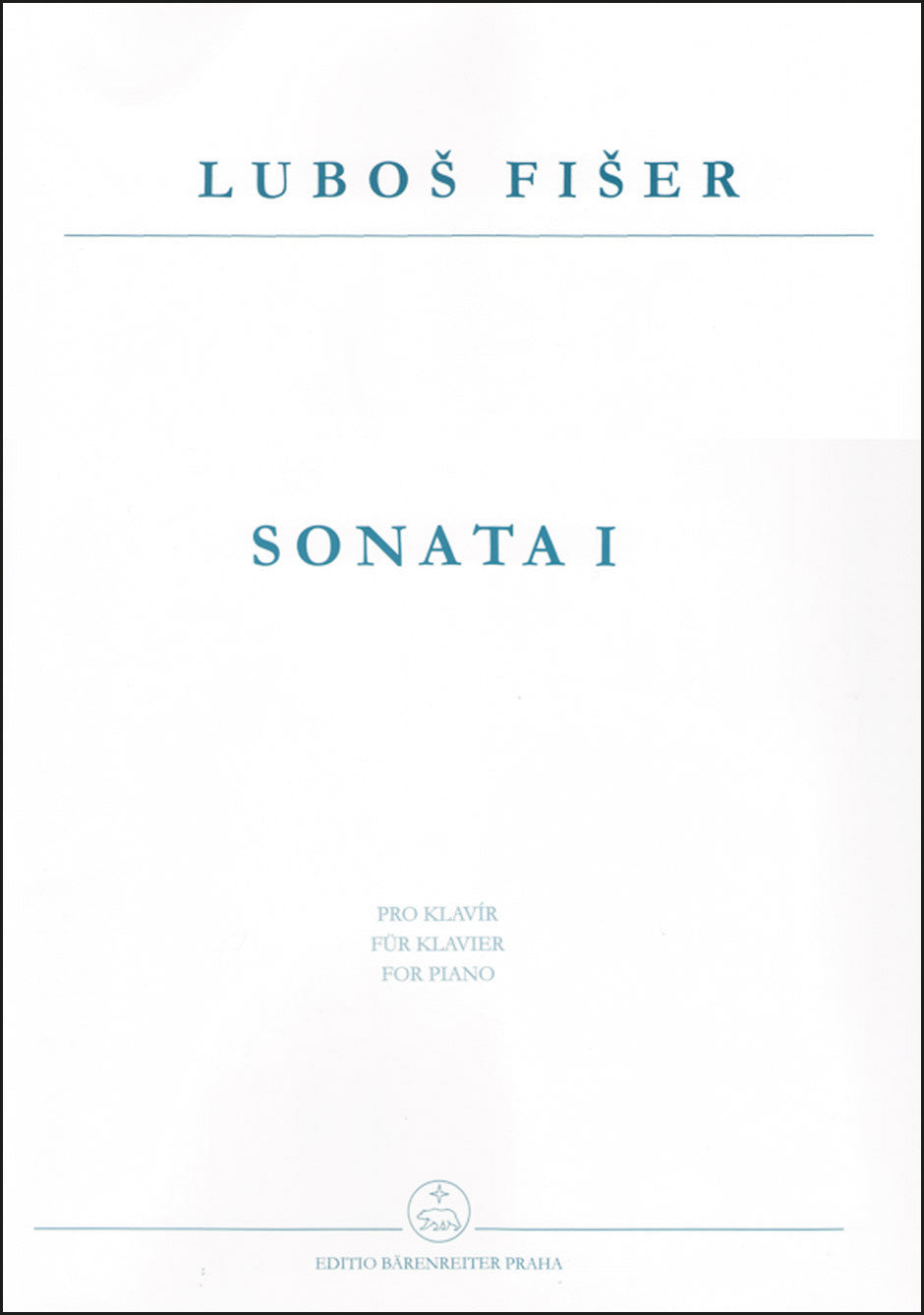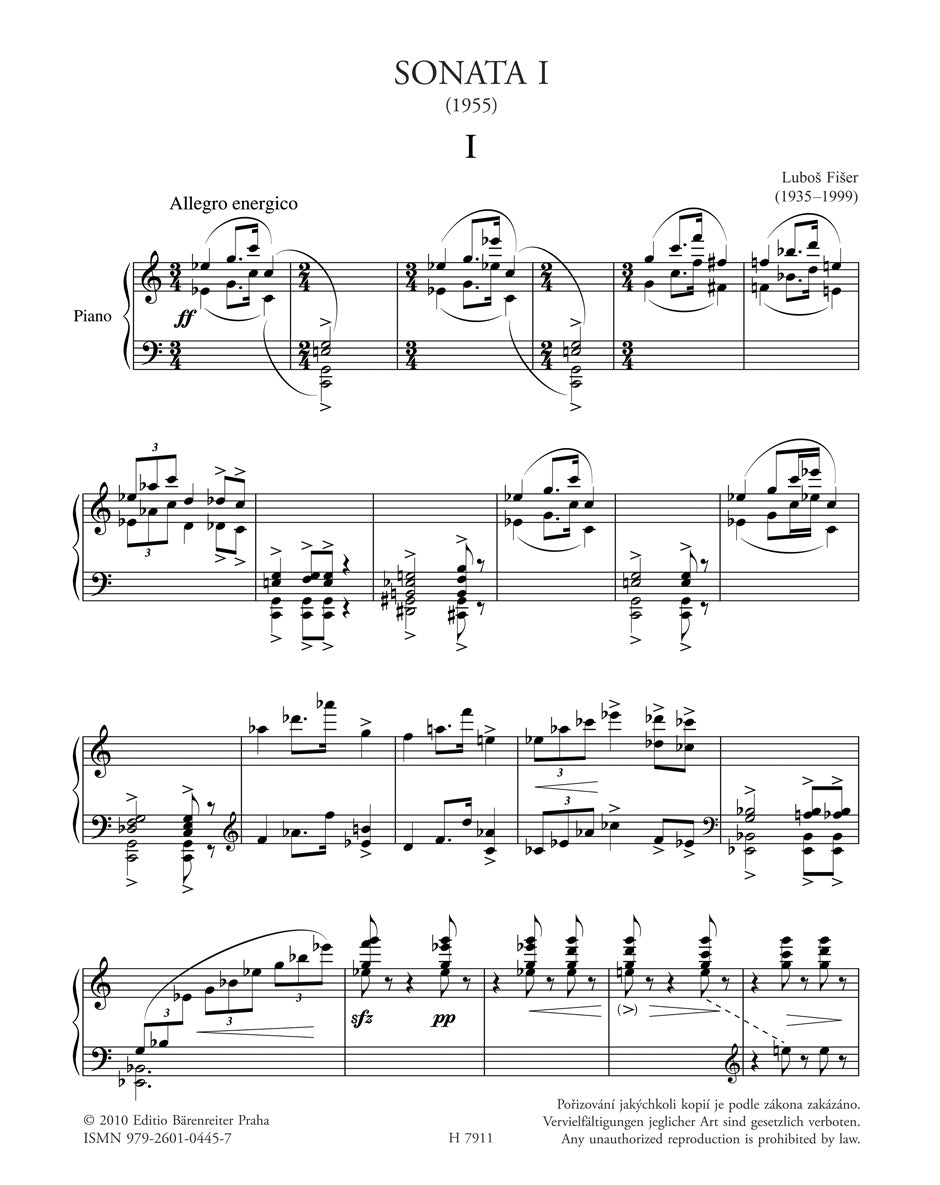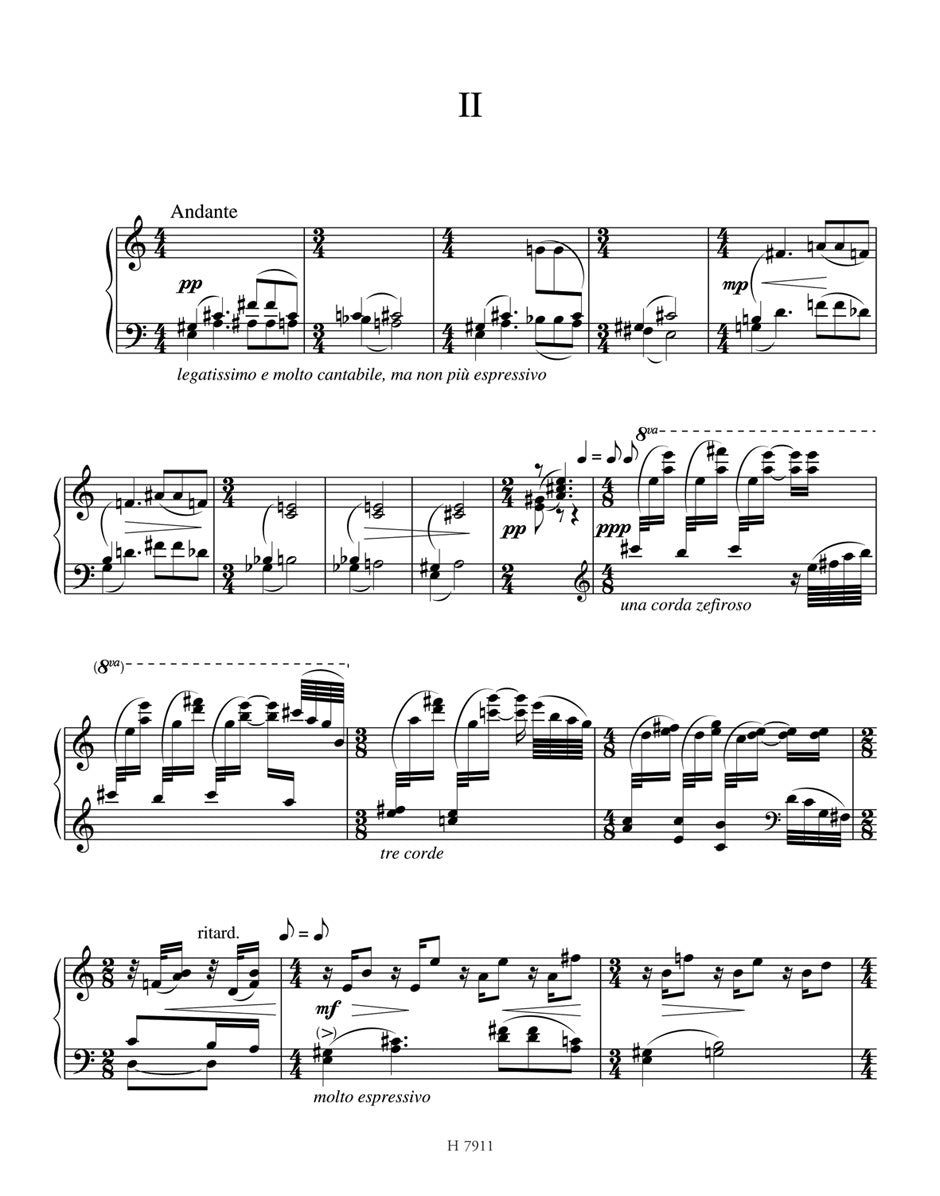Fišer: Piano Sonata No. 1
In stock and typically ships within 1 business day.
- Composer: Luboš Fišer (1935-1999)
- Instrumentation: Piano
- Work: Piano Sonata No. 1
- ISMN:
- Size: 9.3 x 12.2 inches
- Pages: 28
Description
Luboš Fišer (1935-1999) was one of the most talented Czech composers of his generation. Born in Prague, he studied at the Prague Conservatoire from 1952-1956 and then at the Academy of Music. He was known to the public for his many film scores but it was his other compositions, many of them written under difficult political conditions, which mark him out as a composer of significance.
Fišer's eight piano sonatas have a special place in his œuvre. Fišer subsequently eliminated his second sonata (1956) from his compositional repertoire. From the third sonata onwards (1960), subtitled Fantasia, the composer wrote a two-movement composition, in which he continued to incorporate as his fundamental musical device the confrontation of-sharp contrasts in tempo and mood. Beginning with his fourth sonata (1962–1964), Fišer created a single-movement work in an expressive, formally focused composition which betrays a progression towards greater compactness of musical shape in a concise yet effective musical testimony. The fifth sonata was written in 1974, the sixth sonata in 1978. The seventh sonata from 1985 was dedicated to František Maxián, the eighth sonata was written in 1995.
Piano Sonata No. 1 was written in 1955. Fiser worked on it during his last year at the Prague Conservatoire under the supervision of Emil Hlobil. The piece is one of Fiser's early works which still respect a traditional compositional approach. Unlike his Major and late piano sonatas, this sonata has three movements, each representing the traditional Classical-Romantic form. The sonata was premiered by Fiser's fellow-student and friend Antonin Jemelik in Theatre D34 on 30 January 1956.
The setting for this piece is based on the single edition to date (SNKLHU, 1957); only with regard to a few inconsistencies in the score was it necessary to consult the composer's manuscript (kept at the National Museum - Czech Museum of Music, acquisition number 297/2006).
Publishers use a lot of words to describe what they sell, and we know it can be confusing. We've tried to be as clear as possible to make sure you get exactly what you are looking for. Below are descriptions of the terms that we use to describe the various formats that music often comes in.
Choral Score
A score for vocalists that only contains the vocal lines. The instrumental parts are not there for reference. Generally, cheaper than a vocal score and requires multiple copies for purchase.
Facsimile
Reproductions of the original hand-written scores from the composer.
Full Score
For ensemble music, this indicates that the edition contains all parts on a single system (there are not separate parts for each player). In larger ensembles, this is for the conductor.
Hardcover
Hardbound. Generally either linen-covered or half-leather.
Orchestral Parts
Similar to a wind set, this is a collection of parts. In the case of strings, the numbers listed are the number of copies included, though generally these are available individually (often with minimum quantities required).
Paperback
When publishers offer multiple bindings (e.g. hardcover) or study scores, this is the "standard" version. If you're planning to play the music, this is probably what you want.
Performance / Playing Score
A score of the music containing all parts on one system, intended for players to share. There are not separate parts for each player.
Set of Parts
For ensemble music, this indicates that there are separate individual parts for each player.
Solo Part with Piano Reduction
For solo pieces with orchestra, this is a version that contains a piano reduction of the orchestra parts. For piano pieces, two copies are typically needed for performance.
Study Score
A small (think choral size) copy of the complete score meant for studying, and not playing. They make great add-ons when learning concertos and small chamber works.
Vocal Score
A score prepared for vocalists that includes the piano/organ part or a reduction of the instrumental parts.
Wind Set
For orchestral music, this is a collection of wind and percussion parts. The specific quantities of each instrument are notated.
With Audio
In addition to the printed music, the edition contains recordings of the pieces. This may be an included CD, or access to files on the internet.
With / Without Fingering (Markings)
Some publishers prepare two copies - a pure Urtext edition that includes no fingering (or bowing) suggestions and a lightly edited version that includes a minimal number of editorial markings.





